If your PC isn’t working well, it can be due to missing or corrupted system files. When this happens, your computer may keep freezing or crashing, or you may encounter a blue screen of death or other error messages. But don’t worry. With the help of some powerful tools, you can easily fix this problem on your own. Here we’ll show you how to fix corrupted system files on Windows 10, 11.
Try these fixes
- Run the System File Checker tool
- Automatically repair system files with Fortect
- Use the Deployment Image Servicing and Management tool
- Restore your PC from a system restore point
Fix 1: Run the System File Checker tool
System File Checker (SFC) is a Windows built-in tool that allows users to scan for and repair corrupted Windows system files. To run the SFC tool, follow these steps:
- In the search box on the taskbar, type cmd and then select Run as administrator.

- On the User Account Control prompt, click Yes.
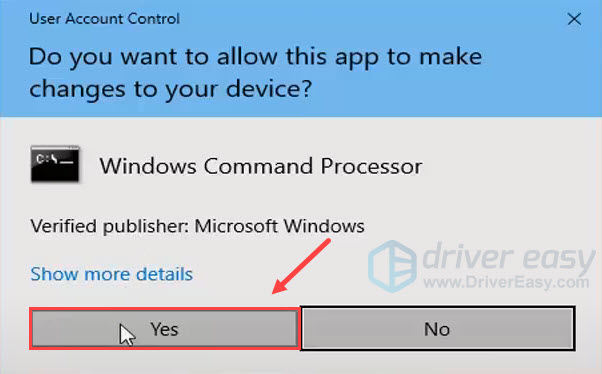
- In the command prompt window, type the following command and then press Enter.
sfc /scannow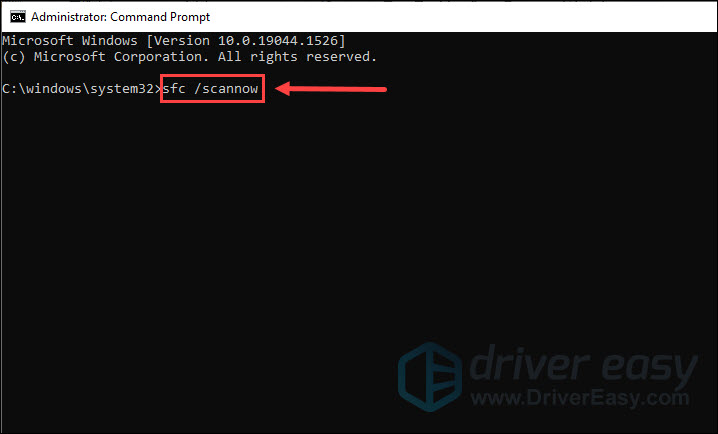
- The System File Checker tool will begin to scan and repair corrupted system files. Don’t close the window until the verification is 100% complete.
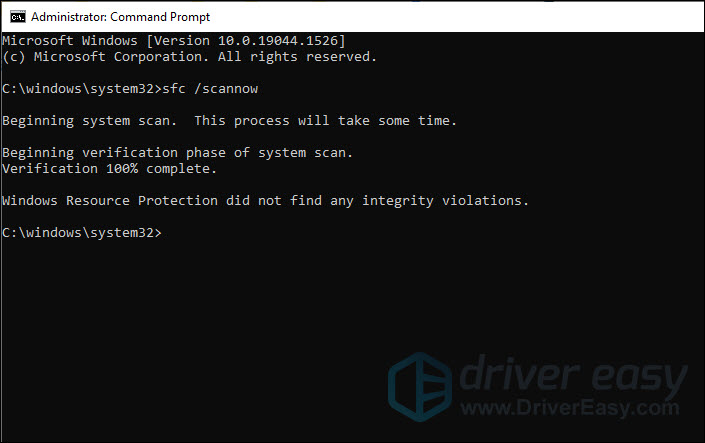
After the process is complete, you may receive one of the following messages:
- Windows Resource Protection did not find any integrity violations. This means that SFC didn’t find any missing or corrupted system files.
- Windows Resource Protection could not perform the requested operation. You need to perform the System File Checker scan in safe mode.
- Windows Resource Protection found corrupt files and successfully repaired them. Your problem should have been resolved.
- Windows Resource Protection found corrupt files but was unable to fix some of them. In this case, you can try to manually repair the corrupted files or use a Windows repair tool to automatically fix things up.
If the System File Checker tool fails to solve your problem, try the second tool below.
Fix 2: Automatically repair system files with Fortect
If you have tried all the above but are still unable to fix corrupted system files, consider using an automatic Windows repair tool, Fortect, which may be more effective.
Fortect is one of the best PC repair tools that specializes in Windows repair. It scans and diagnoses, then repairs, your damaged PC with technology that not only fixes your Windows operating system but also reverses the damage already done with a full database of replacement files. With just a few clicks, Fortect will revive your entire system, leaving it error-free and stable, safely and securely.
To repair system files with Fortect:
- Download and install Fortect.
- Open Fortect and run a FREE scan. This might take 3~5 minutes.
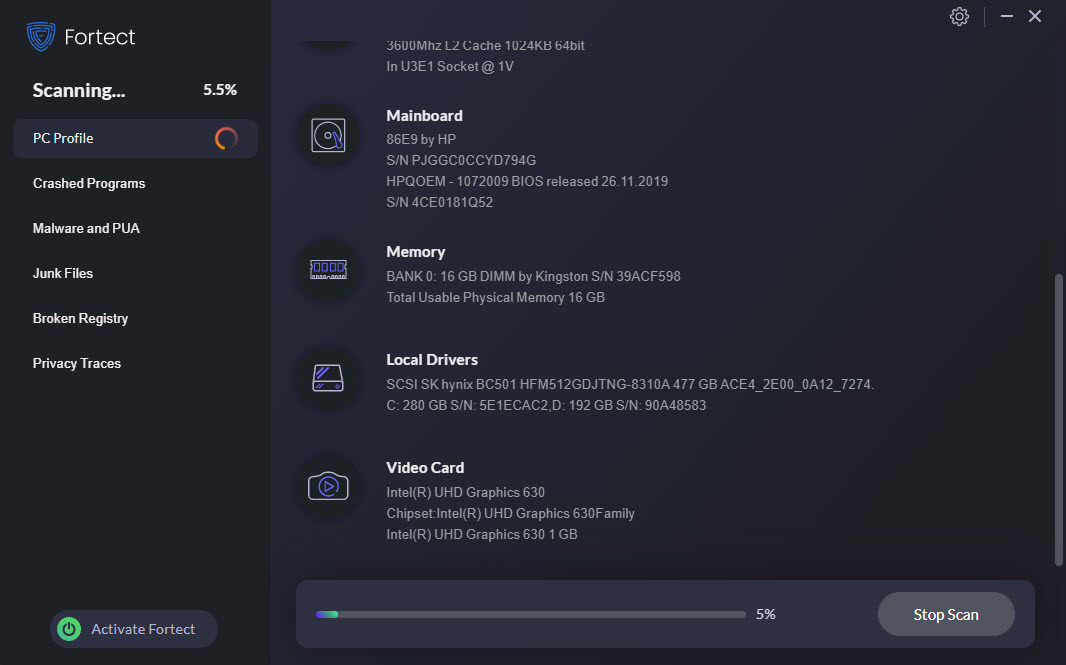
- Once the process is finished, you’ll see the summary of detected issues on your PC. Click Start Repair and all the issues will be fixed automatically. (You’ll need to purchase the full version. It comes with a 60-day Money-Back Guarantee so you can refund anytime if Fortect doesn’t fix your problem).
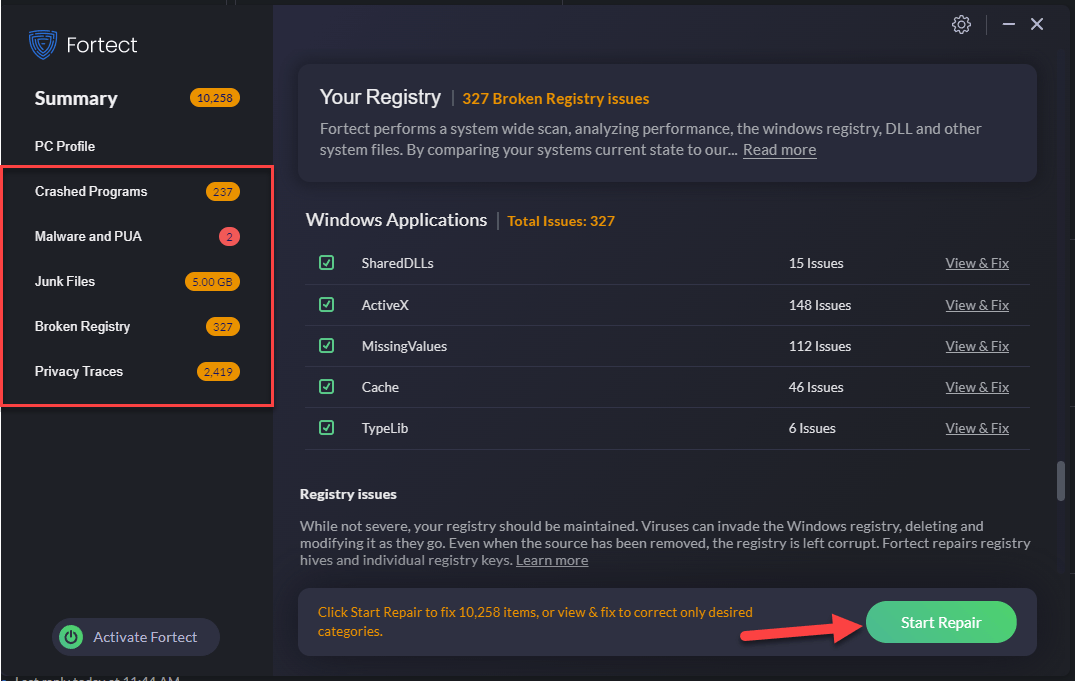
Fix 3: Use the Deployment Image Servicing and Management tool
Deployment Image Servicing and Management (DISM) is a command-line tool that can be used to repair Windows images or modify Windows installation media. DISM uses Windows Updates to fix corrupted system files. To use this tool:
- In the search box on the taskbar, type cmd and then select Run as administrator.
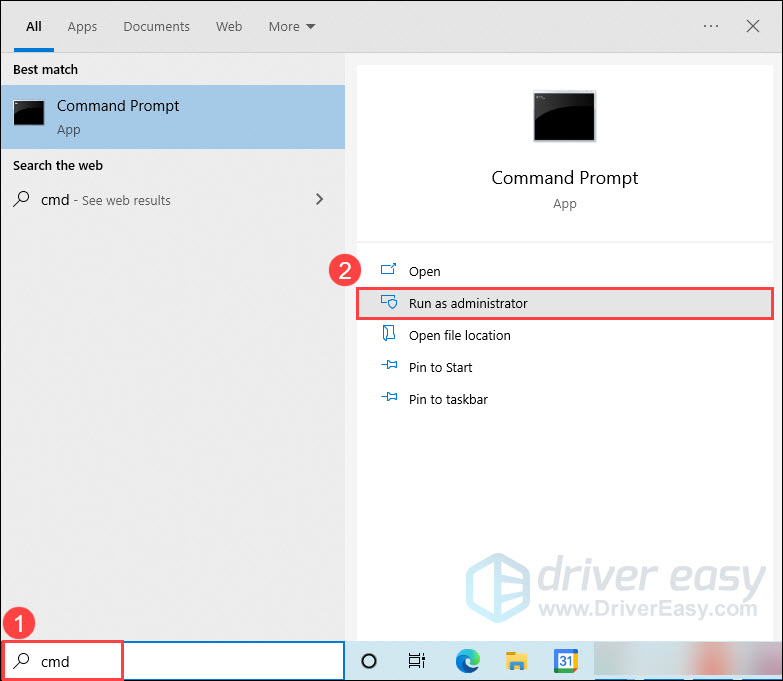
- On the User Account Control prompt, click Yes.

- At the command prompt, type the following command and then press Enter.
DISM /Online /Cleanup-Image /RestoreHealth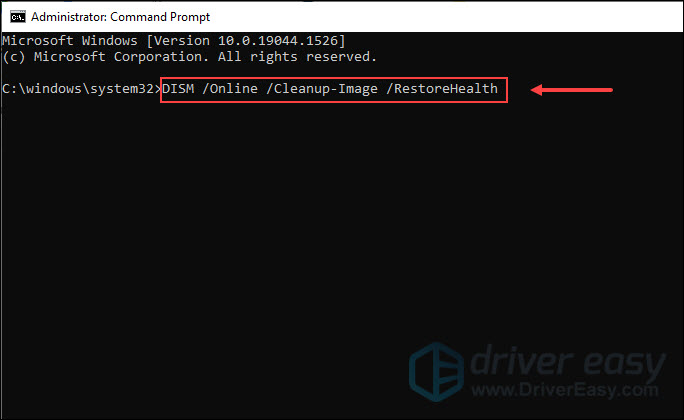
- Wait a few minutes for it to perform the scan.
- Once the process is finished, restart your computer.
If your problem still persists, check out the next method.
Fix 4: Restore your PC from a system restore point
If your PC isn’t working well and you recently installed a new driver or app, you can try to restore your PC. This will revert your PC to a prior state and undo recent system changes you’ve made. However, this feature can only be used if you’ve previously created a restore point. If you don’t have one, you can skip this method.
To restore your PC to an earlier point in time:
- In the search box on the taskbar, type create a restore point and select it from the list of results.
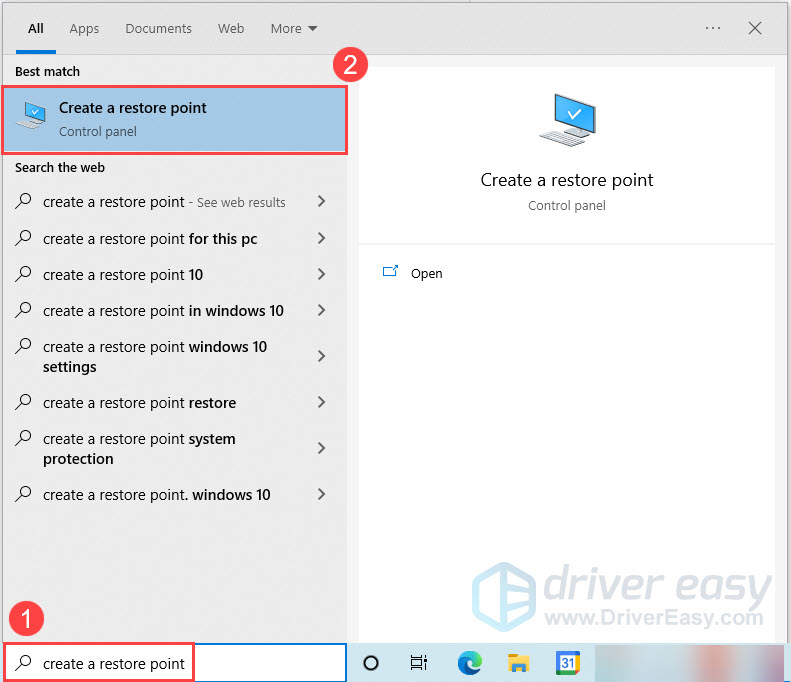
- In the pop-up window, click System Restore….

- Click Next.
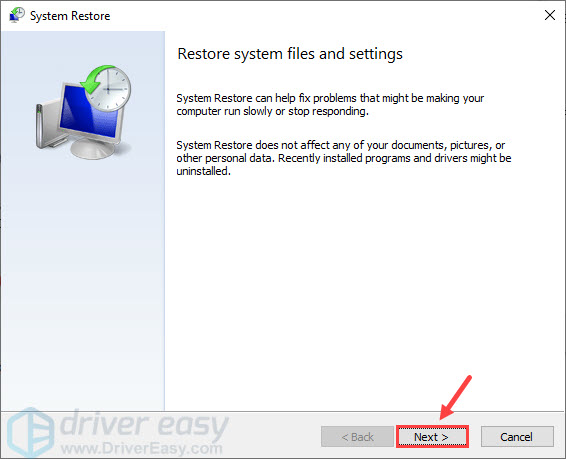
- Select the restore point that you want to use and click Next.
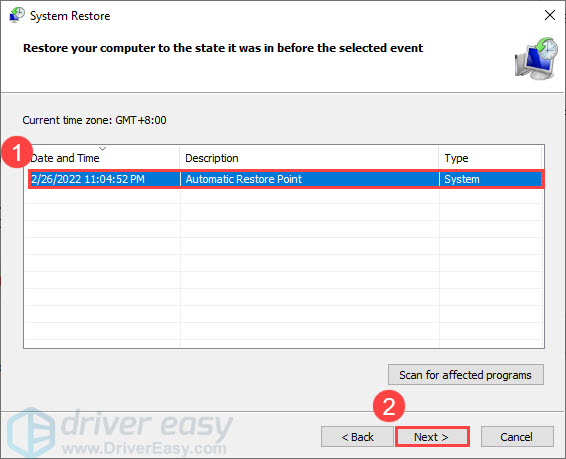
- Click Finish.
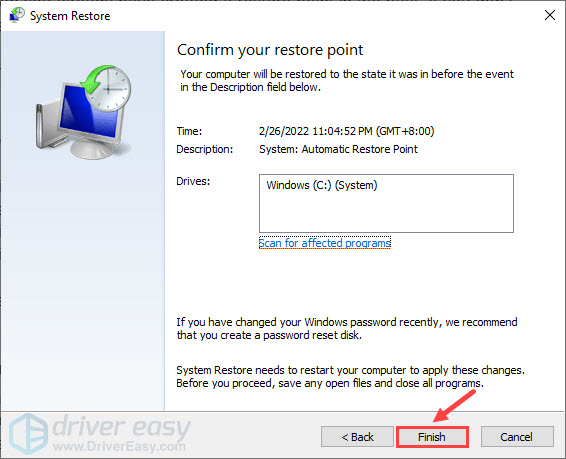
- Click Yes to continue.
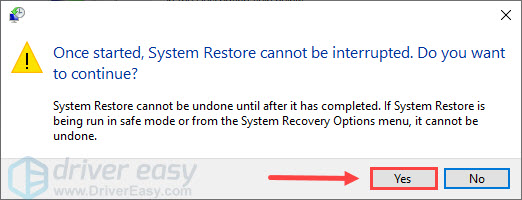
Once the process is finished, check if your problem has been resolved.
If none of the above methods worked for you, a clean reinstallation of Windows is often the last option. Be sure to back up your important files before reinstalling the operating system.
So, these are 4 easy ways to help you fix corrupted system files on Windows 10, 11. Hopefully, this post helped. If you have any questions or suggestions, feel free to leave us a comment below.





